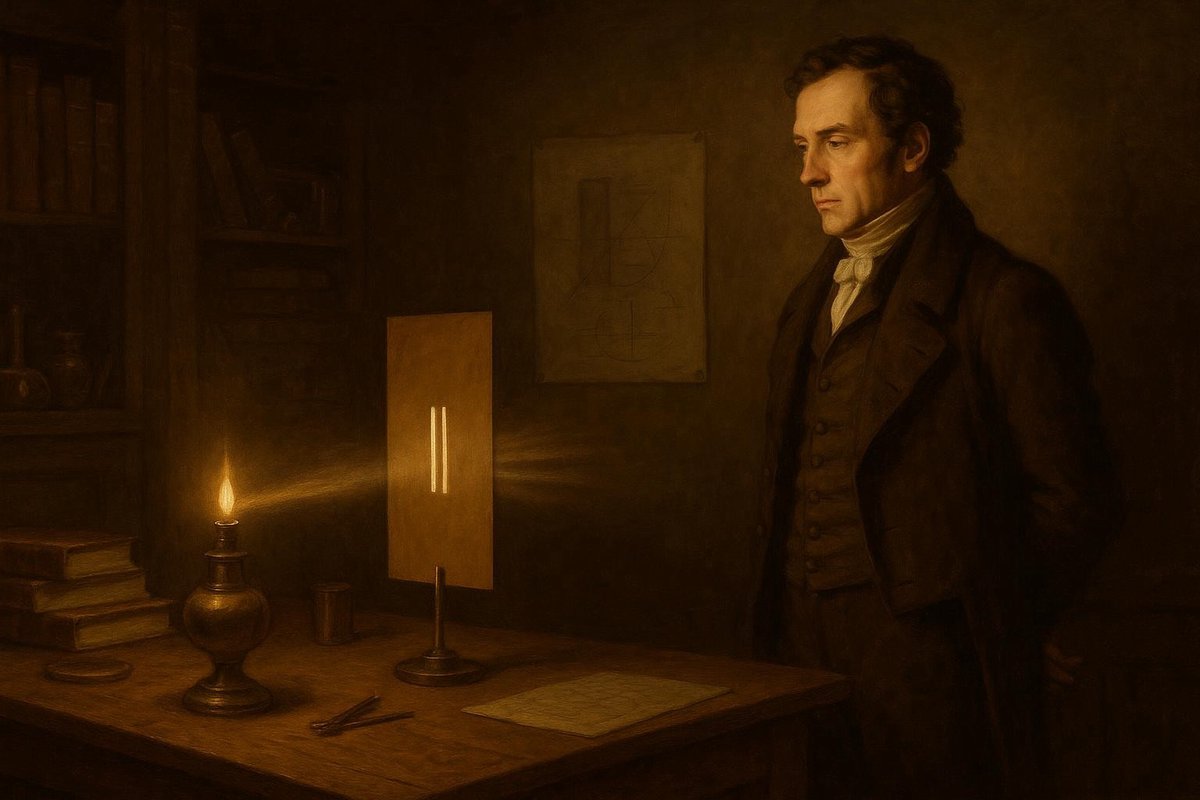
How does light behave? Is it a wave, a particle, or something more mysterious? These questions have intrigued scientists for centuries. The double-slit experiment, a seemingly simple setup, provided groundbreaking insights into the nature of light and quantum mechanics. Let’s delve into this fascinating scientific journey.
Hypothesis & Context
At the dawn of the 19th century, the scientific community was divided. Was light a particle, championed by Isaac Newton, or a wave, as proposed by Christian Huygens? Enter Thomas Young, a daring scientist with a radical idea. In 1801, Young hypothesized that if light were a wave, it should exhibit interference patterns when passed through two slits, much like ripples in water.
- Young believed that understanding light’s true nature could revolutionize optics.
- Newton’s particle theory was dominant, but emerging evidence hinted at wave-like properties.
- Young’s hypothesis was a bold challenge to the status quo of Newtonian physics.
Young’s vision was simple yet profound: Could light’s behavior reveal more than what meets the eye? This experiment was poised to redefine our understanding of physics.
Setup & Method
The experiment was ingeniously straightforward. Young used a light source, a card with two narrow slits, and a screen to capture the resulting pattern. The setup was simple but required precision. Ensuring the slits were narrow and close enough was crucial for the expected interference patterns.
- A single light source was directed towards a card with two closely spaced slits.
- The light passing through the slits projected onto a screen behind them.
- Young meticulously maintained the alignment to ensure accurate observations.
Why was this method chosen? Because if light were a wave, it should diffract and create an interference pattern—a series of light and dark bands on the screen—confirming its wavelike nature. This setup, while seemingly simple, was a masterstroke in experimental design.
Results & Reactions
The results were nothing short of revolutionary. The screen displayed a series of bright and dark fringes, a clear interference pattern. This was irrefutable evidence that light behaved as a wave, contradicting the particle theory.
- The interference pattern was a direct consequence of wave behavior.
- It sparked heated debates and discussions within scientific circles.
- Young’s findings were met with skepticism but gradually gained acceptance.
“This elegant experiment has shown us more about light than centuries of speculation,” said a contemporary of Young. It was a pivotal moment in physics, paving the way for future explorations into the quantum realm.
Implications
The implications of the double-slit experiment extended far beyond its time. It laid the groundwork for the development of quantum mechanics, challenging our understanding of reality itself. Concepts like wave-particle duality emerged, questioning the very nature of existence.
- It contributed to the decline of the particle theory of light.
- It sparked new theories and debates in the scientific community.
- The experiment inspired future physicists, including Einstein and Bohr.
Imagine light as a paradoxical dance between waves and particles, a concept that continues to intrigue and inspire. The experiment’s legacy is a testament to the power of curiosity and the pursuit of knowledge.
In conclusion, the double-slit experiment not only transformed our understanding of light but also opened new avenues in the realm of quantum physics. It is a reminder of how a simple experiment can challenge and reshape our worldviews.
Fuel Someone Else’s Curiosity
Have you ever wondered how a simple experiment could change everything? Share this article and spark curiosity in others. Let’s continue exploring the mysteries of the universe together. Who knows what we might discover next?

Leave a Reply